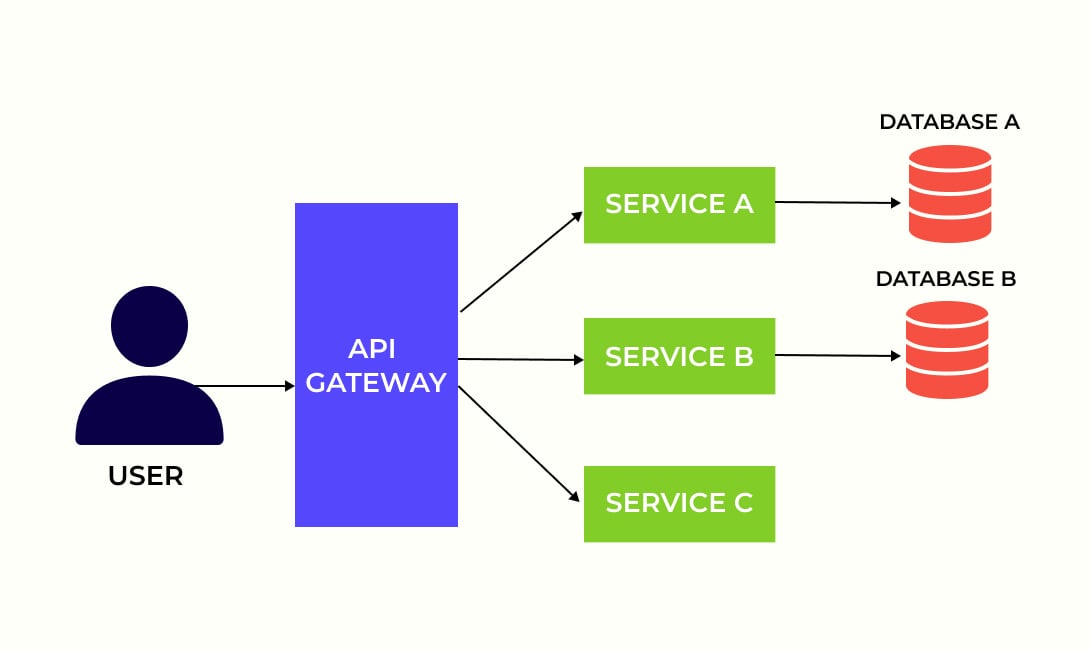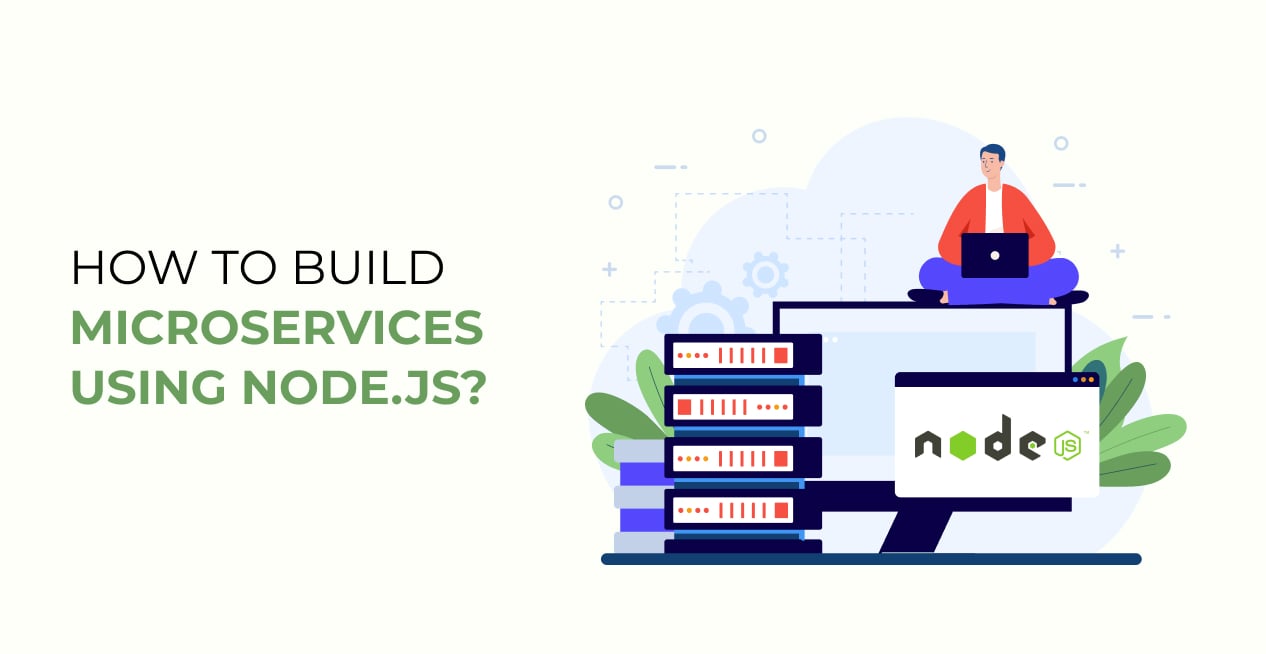Introduction
One of the top picks in conventional software development entails binding all software components together, known as a Monolithic application. Coupling all components requires extra effort; moreover, in a few cases, vulnerabilities increase to respond to the changes in the system. On the other hand, the complexity increases if there is a problem in any particular component.
Recently, Microservices have been mainly favored to fixate on these dilemmas. As the title implies, Microservices are about developing software applications by breaking them into smaller parts known as ‘services’. Moreover, a flaw in any particular part of a component won’t affect the entire application.
In this blog, let’s explore how to unlock Microservices in Node.js and discuss how it is becoming the most preferred practice in software development.
What are Microservices ?
Microservices is an application architecture where the software application is broken down into smaller independent parts. Each service emphasizes performing a determined task or function of the application. For example:- payment processing, user authentication, and data storage.
To explain better, let’s look at a generic example; suppose it is a group of specialists working to accomplish one big goal. Although they all have different skill sets, they work together and communicate with one another to reach the intended outcome. Similarly, each service in a microservice architecture is created, deployed, and maintained individually. Instead, they use the internet and a channel with a straightforward interface to connect.
Read more at: Everything you need to know about Microservices
How do Microservices work?

What is Node.js?
Node.js is an open-source server environment that can run on multiple operating systems like Windows, Linux, Unix, MacOS, and many more. Node.js runs on the V8 JavaScript engine and executes JavaScript code outside a web browser. It allows developers to develop highly scalable, high-performance server-side applications.
Node.js facilitates asynchronous programming, which helps to develop highly concurrent and real-time interaction. It comprises rich components and packages available through NPM(Node Package Manager), making integrating different libraries and frameworks easy. Developers can build Microservices using Node.js , for example, web applications, APIs, real-time applications, microservices, and IoT. Some of the real-time applications of Node.js software include GoDaddy, LinkedIn, Netflix, PayPal, and Amazon Web Services. To build one such Node.js application, hire a Node.js development company.
When to use Node.js microservices?
Node.js offers many reasons for being an idle choice for building Microservices due to its extremely lightweight and efficiency. Moreover, its asynchronous model further accentuates its appeal. Employing Node.js microservices brings benefits in multiple ways. Let’s explore some of these factors in more detail:-
Scalability
Node.js excels in efficiently handling a large concurrent load with its non-blocking and asynchronous nature. It is a well-suited choice for managing large traffic and seamless stability.
Real-time Application
When it comes to building Real-time applications, such as Chat applications, collaborative tools, or real-time monitoring systems. Microservices architecture enables seamless real-time communication and handles many concurrent connections. This meets the demands of developing highly interactive applications for modern users.
JavaScript Full Stack
If your team is proficient in JavaScript and embraces the full-stack approach, Node.js is right for microservices for code reusability and easier knowledge sharing across the stack.
Developer Productivity
Node.js offers flourishing packages and libraries that accelerate development and reduce the time to market for microservices. Its event-driven architecture and straightforward setup and deployment provide a seamless development process.
Prototyping and MVPs
If you plan to build Minimum Viable Products (MVPs) or prototypes. Node.js can build functional microservices. Moreover, they are an ideal choice for faster iterations and accelerated innovation.
Integration with existing systems
Node.js is an excellent choice for microservices architecture that needs to communicate and exchange data with multiple systems, as it supports multiple protocols like REST, GraphQL, and message queues.
Implementing Microservices with Node.js
Microservices offer scalability, performance, and usability. On the other hand, Node.js is preferred for developing microservices.
To effectively develop node js microservices architecture, it is crucial to follow a structured approach. Here are the steps to develop microservices using Node.js;-
Determine Service Boundaries
Analyze your application components and identify areas that can be divided into more minor, standalone services. Establishing clear service boundaries ensures that each microservice has a well-defined responsibility and can be developed and deployed independently.
Choose a protocol for communication
Determine the appropriate communication protocols for seamless interaction between microservices. A few choices for inter-microservice communication include gRPC, GraphQL and WebSockets, and RESTful APIs. Select the protocol which suits your requirements.
Leverage a structure
Node.js frameworks, includes Nest.js, Express.js, and Hapi.js, which facilitate the development of Microservices. These frameworks aid in developing scalable and robust microservices architectures.
Create a data storage stratum
Choose the best data storage strategy for microservices. Depending on your needs, you can decide whether to use a single database for all microservices or a different database for each microservice. Consider the data consistency, scalability, and isolation issues when choosing.
Encapsulate the microservices in containers
Use containerization tools like Docker to bundle your microservices into containers. Microservices may be easily scaled and managed due to containerization, simplifying deployment, and guaranteeing consistency across various environments.
Adopt continuous integration and deployment
Use continuous integration and deployment (CI/CD) systems like Jenkins, CircleCI, or TravisCI to automate your build and deployment processes. This facilitates the deployment of microservices, speeds up development cycles, and ensures code quality.
Monitor and control microservices
Use software like Kubernetes, Prometheus, and Grafana to monitor and manage your microservices’ performance and scalability. These technologies give you information on how your resources are being used. Moreover, they allow for effective scalability and support the overall health of your microservices architecture.
Pros & cons of Node js Microservice
Pros of NodeJS Microservice
Microservice architecture divides the applications into more minor, independent services which can connect through the channels of APIs during the software development process. This strategy is far more advantageous compared to Monolithic architectures. Some of the pros of Microservices are as follows:-
a) Adaptability- As microservices are adaptable independently, the resources can be used whenever needed. This results in improved performance and enhanced resource management.
b) Robustness- Microservices are built keeping in mind encountering unexpected. In such cases, only that service is affected when one fails, not the entire system. Therefore, the system is fault resilient.
c) Technological heterogeneity- Microservices can be developed leveraging a variety of programming languages and technologies. Because of this, the developing team can choose the optimal technology for each service without considering the limitations.
d) Agility- Microservices are agile as they are independent, and modifications to one service do not affect the system as a whole. Due to this, teams can deliver updates frequently without impacting the whole application.
e) Easily comprehensible and manageable- Microservices are pretty easy to comprehend and maintain as they are straightforward and compact than monolithic applications.
f) Improved fault segregation- Microservices are independent, with defects to one specific service, making finding, identifying, and fixing problems simply.
Cons of NodeJS Microservice
Although NodeJS microservices have a wealth of benefits, they also have a few drawbacks. Following are the significant cons of Microservice architecture:-
1) Complex process- A microservice architecture’s development process is complex. Collaboration between numerous teams and services is necessary to develop a microservice-based system.
2) Increased cost- Microservices can cause heavy costs relating to load balancing, service discovery, and communication protocols. Due to this, the complexity and price associated with it may increase.
3) Testing – Microservices testing can be complex, requiring independent testing of each service. As a result, the duration and cost of the test may increase.
4) Telephone overhead- There is a greater risk of inter-service communication due to high-end network traffic and communication overhead.
5) Operational difficulty- A microservice-based system can be challenging to maintain and monitor compared to a monolithic one due to increased operational workload.
6) Handling of data- Maintaining data consistency and integrity might be more difficult if data is split over several services.
Conclusion
Node.js is a reliable and flexible platform for building microservices-based applications. Due to its ability to create a non-blocking I/O architecture and a thriving community, it is perfect for creating high-performance and scalable applications. An exemplary architecture concept, containerization techniques, and communication protocols can help developers create scalable, maintainable microservices-based applications. All of this can be easily achieved if you choose OpenXcell to create applications.









